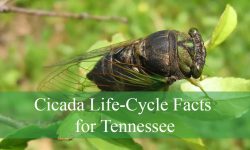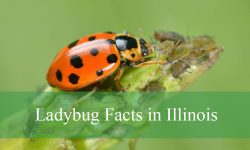Missouri’s forests, fields, riversides, and neighborhoods are home to an impressive range of insects and arachnids, many of which play vital roles in the ecosystem. However, among the harmless species that pollinate flowers and control pests, there are also a number of bugs capable of biting, stinging, or spreading disease. These creatures often stay hidden in brush, woodpiles, tall grass, and even inside homes, making it easy for residents to encounter them without realizing it.
Some of Missouri’s most dangerous bugs appear intimidating, while others are small enough to go unnoticed until a bite or sting occurs. Venomous spiders, aggressive wasps, disease-carrying ticks, and painful stinging insects make the state a place where awareness is essential. Many of these species are active during the warm months, but several remain a threat year-round, especially in wooded or humid environments.
This guide explores 23 of the most dangerous bugs in Missouri, complete with identification details, behavior notes, and the risks they pose to humans. Understanding what these insects look like and where they live can help reduce accidental encounters and keep both people and pets safe outdoors.
Types of Dangerous Bugs Found in Missouri
Brown Recluse Spider
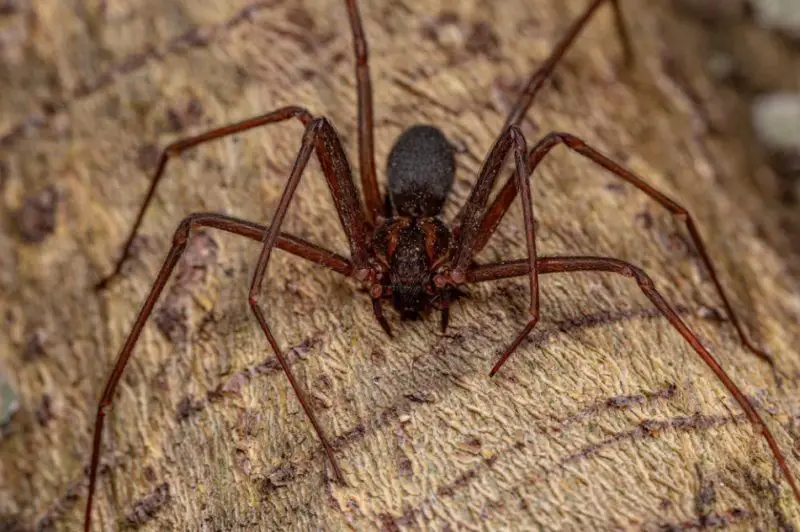
The Brown Recluse Spider is one of Missouri’s most medically significant arachnids, easily recognized by the violin-shaped marking on its cephalothorax. Its body is typically light to medium brown, with long, slender legs that lack noticeable hair. Adults usually measure between 6 to 20 millimeters, making them small but deceptively dangerous.
This spider prefers quiet, undisturbed locations such as basements, closets, storage boxes, and woodpiles. It is nocturnal and shy by nature, avoiding human contact whenever possible. Despite its timid behavior, accidental encounters happen when people reach into cluttered areas or put on clothing where a spider has hidden.
The Brown Recluse possesses necrotic venom capable of causing tissue damage around the bite site. Symptoms may begin with mild stinging or redness, followed by blistering, ulceration, and in rare cases, systemic illness. Not all bites lead to severe reactions, but the potential for serious complications makes identification and caution essential.
Their presence around Missouri homes is common due to the state’s warm climate and abundance of hiding places. Keeping indoor areas clean, reducing clutter, and sealing cracks are effective ways to reduce encounters. While the Brown Recluse does not seek confrontation, its venom makes it one of Missouri’s most feared bugs.
Black Widow Spider
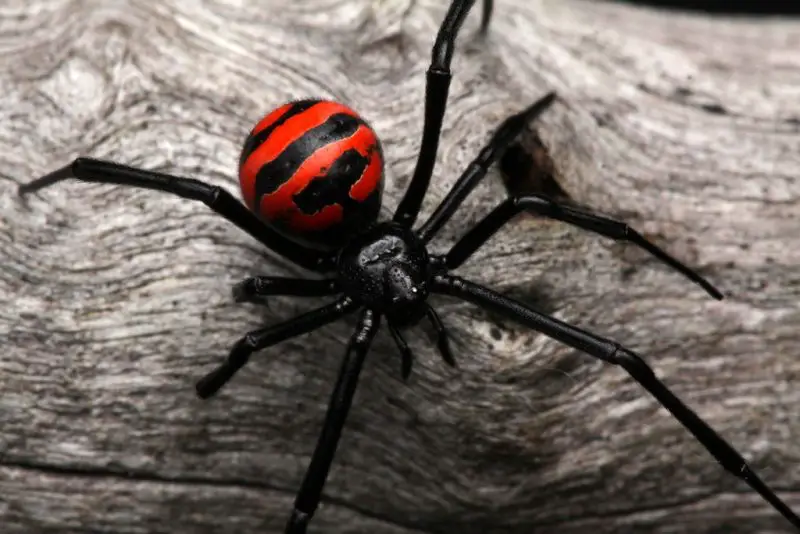
The Black Widow Spider is another dangerous species found across Missouri, instantly recognizable by its glossy black body and the red hourglass marking on the underside of its abdomen. Adult females measure around 25 to 38 millimeters with legs extended, while males are smaller, lighter-colored, and far less venomous.
These spiders favor sheltered, dim areas such as garages, woodpiles, sheds, and outdoor debris. They spin messy, irregular webs close to the ground and often remain motionless, waiting for prey to wander into their trap. Despite their intimidating appearance, Black Widows are generally non-aggressive and only bite when they feel trapped or threatened.
The venom of the female Black Widow is neurotoxic and can cause intense pain, muscle cramps, nausea, and sweating. Though rarely fatal with modern medical care, bites require attention due to potentially severe symptoms. Children, the elderly, and individuals with underlying health conditions face higher risks from envenomation.
Black Widows play an important ecological role by controlling insect populations, but their proximity to homes creates potential hazards. Keeping storage areas tidy, wearing gloves when handling firewood, and reducing clutter outdoors can help minimize encounters. Their striking coloration and harmful venom make them one of Missouri’s most well-known dangerous bugs.
Yellow Sac Spider

The Yellow Sac Spider is a small but troublesome species in Missouri, known for its pale yellow to light beige body and relatively long front legs. Adults typically measure 5 to 10 millimeters, making them easy to overlook inside homes. Unlike many spiders, they do not rely on webs to catch prey but instead hunt actively at night.
These spiders often build small silk sacs in corners, behind picture frames, under windowsills, or among outdoor vegetation. They wander frequently, which increases the likelihood of accidental contact with humans. Their speed and mobility make them common household intruders, particularly during the fall when temperatures drop.
The venom of the Yellow Sac Spider can cause painful bites accompanied by redness, itching, and mild necrosis. While the injury rarely becomes severe, it can produce more irritation than the bite of many other spiders. Bites often occur when the spider becomes trapped in clothing or bedding, leading to defensive strikes.
Because these spiders thrive both indoors and outdoors, controlling their presence requires regular cleaning and sealing entry points around windows and doors. Although not as dangerous as the Brown Recluse or Black Widow, the Yellow Sac Spider is still considered a medically significant species due to its frequent bites and irritating venom.
Wolf Spider

Wolf Spiders are one of Missouri’s most widespread ground-dwelling spiders, known for their excellent eyesight, quick movements, and robust bodies. Their coloration typically includes shades of gray, brown, and black, often arranged in camouflaging patterns that help them blend with soil and leaf litter. Adults range widely in size from 10 to 35 millimeters, making some individuals appear quite large.
These spiders do not build webs to trap prey. Instead, they roam at night or wait near burrow entrances to ambush insects and small arthropods. They are often seen running across floors, patios, and wooded trails. Despite their intimidating speed and size, they generally avoid confrontation with people.
Wolf Spider bites are usually mild, resulting in temporary pain, swelling, or redness. Their venom is not considered medically dangerous, but their large fangs can still cause a noticeable pinch. Most bites occur when a spider gets trapped under clothing or when someone accidentally handles it.
They thrive in a wide range of habitats including grasslands, forests, gardens, and residential areas. Wolf Spiders often enter homes while searching for prey or shelter, especially during seasonal changes. Although they can be startling, they are far less dangerous than many other species and play a beneficial role by reducing pest insect populations.
Tarantula Hawk Wasp
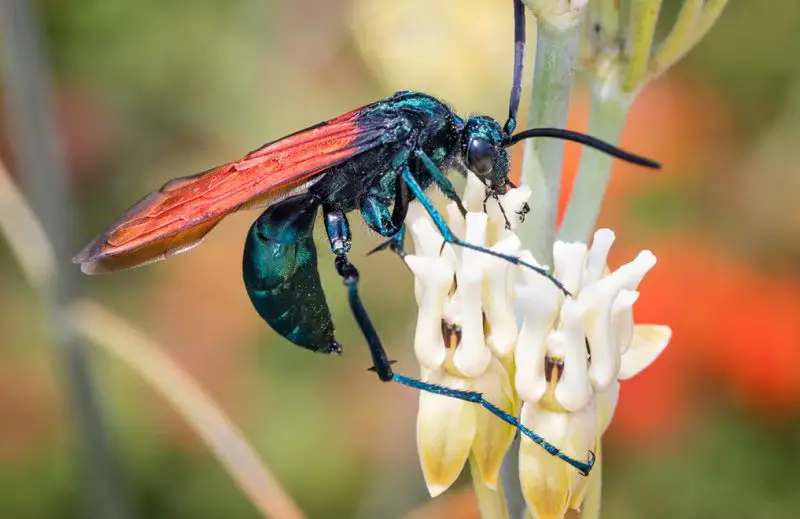
The Tarantula Hawk Wasp is one of the most visually striking and fearsome insects found in Missouri, characterized by its metallic blue-black body and bright orange wings. Adults can reach lengths of 40 to 50 millimeters, making them among the largest wasps in North America. Their appearance alone signals that they are not to be trifled with.
These wasps prefer sunny, open habitats such as prairies, fields, and woodland edges. They feed on nectar and are generally solitary, rarely showing aggression unless provoked. Females hunt tarantulas and large spiders, using their powerful sting to paralyze prey before dragging it to a burrow as food for their developing larvae.
The sting of a Tarantula Hawk Wasp is considered one of the most painful in the insect world. Though extremely intense, the pain is usually short-lived and not typically dangerous to healthy adults. The venom is designed to immobilize spiders, not harm humans, but the severity of the sting makes avoiding contact essential.
Encounters with these wasps are relatively uncommon, and they rarely sting unless handled or threatened. Their impressive size and vivid coloration serve as natural warnings. Despite their frightening capabilities, Tarantula Hawk Wasps contribute to Missouri’s ecosystems by managing spider populations and pollinating flowering plants.
Bald-Faced Hornet
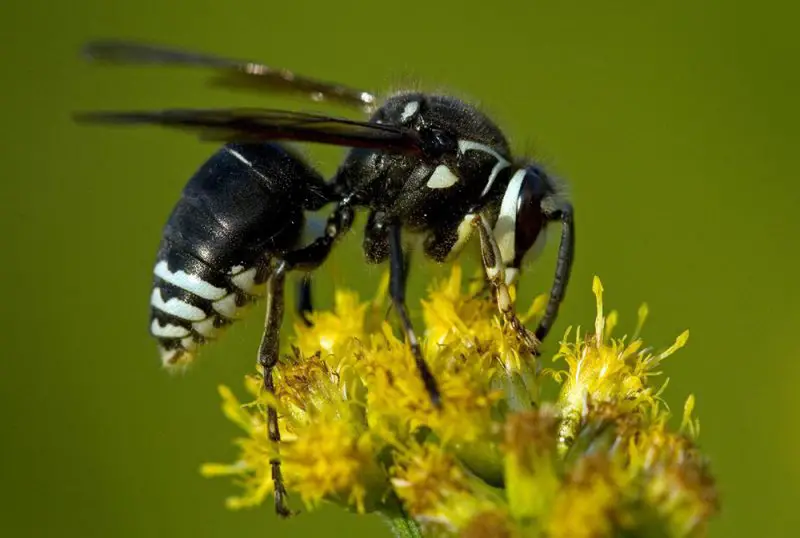
The Bald-Faced Hornet is a large, striking insect found throughout Missouri, easily identified by its black-and-white coloration and robust body shape. Adults typically measure around 15 to 20 millimeters, with queens reaching even larger sizes. Their white facial markings give them a bold appearance that sets them apart from other wasp species in the region.
These hornets build large, football-shaped paper nests high in trees, shrubs, or sometimes under the eaves of buildings. Their colonies are highly protective of their territory, and they respond aggressively to disturbances near the nest. Even brushing against a branch that supports a nest can provoke a rapid defensive swarm.
A Bald-Faced Hornet’s sting is painful and delivers potent venom that can cause swelling, burning, and in some cases, allergic reactions. Multiple stings are common during defensive attacks, and individuals sensitive to insect venom may experience more severe symptoms. Their strong jaws can also deliver a sharp bite when they feel threatened.
Despite their defensive nature, Bald-Faced Hornets benefit Missouri’s ecosystems by hunting flies, caterpillars, and other insects. They help maintain natural balance but become dangerous when they build nests near homes or high-traffic areas. Observing nests from a distance and seeking professional removal when necessary is the safest approach.
European Hornet

The European Hornet is one of the largest stinging insects in Missouri, measuring between 25 and 35 millimeters in length. It has a distinctive yellow-and-brown striped abdomen, reddish thorax, and thick, powerful body. Unlike many wasps, European Hornets remain active at night and are sometimes drawn to outdoor lights.
These hornets prefer hollow trees, old walls, barns, and attics for their nest sites. Their paper nests can grow quite large during the summer months, housing hundreds of workers. Although generally less aggressive than some wasp species, they will defend their nest vigorously and are capable of delivering repeated stings.
The sting of a European Hornet is painful, with venom that can cause swelling, heat, and redness around the site. Multiple stings can be dangerous, particularly for individuals with venom allergies. Their strong mandibles also allow them to damage fruits, stripping bark from trees and occasionally causing problems in orchards.
European Hornets play a role in controlling insect populations but pose risks when their nests appear near homes. They are attracted to sugary foods, fruit trees, and outdoor lights, increasing the likelihood of encounters with people. Careful monitoring and avoiding nest disturbance are key to reducing the danger they present.
Paper Wasp
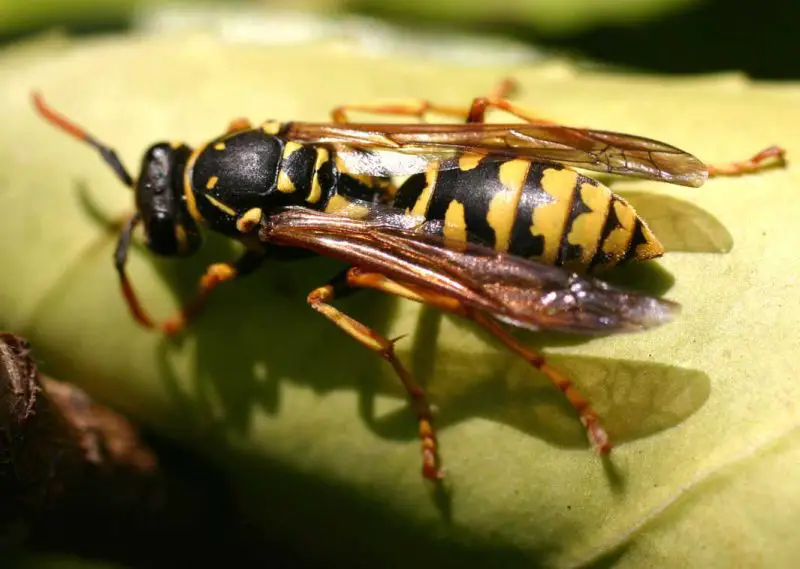
Paper Wasps are slender, long-legged wasps found throughout Missouri, recognizable by their narrow waists and yellow-and-brown or reddish coloration depending on the species. Adults measure about 16 to 20 millimeters in length. They construct open, umbrella-shaped nests made from chewed wood fibers, typically hanging under eaves, porches, and overhangs.
These wasps are semi-social and usually non-aggressive when away from their nests. However, they become highly defensive when their colony is threatened, responding quickly to perceived danger. Their nests are often built in places humans frequently pass, which increases accidental encounters.
The sting of a Paper Wasp is sharp and painful. Their venom can cause swelling, mild burning, and itching, with more serious reactions occurring in individuals who are allergic. Stings often happen when someone unknowingly disturbs a nest while working outdoors or opening a door near a concealed colony.
Paper Wasps help control caterpillars and other garden pests, making them beneficial in natural settings. Still, their tendency to nest on buildings can create safety issues. Checking for new nests during spring and removing them early, before colonies grow, is the safest way to limit danger around homes.
Yellow Jacket

Yellow Jackets are fast-flying, highly aggressive wasps found everywhere in Missouri, especially during late summer. They are easily recognized by their bright black-and-yellow bodies and compact, muscular shape. Adults usually range from 10 to 16 millimeters in length, with queens being slightly larger.
These insects build nests underground, inside walls, in hollow logs, or in hidden cavities around buildings. Their colonies can reach thousands of individuals, and they defend their nests with extreme intensity. Even small vibrations—like footsteps near an underground nest—may provoke an attack.
Yellow Jacket stings are particularly painful due to their potent venom and their ability to sting multiple times. Venom reactions vary from localized swelling to severe allergic responses that require medical attention. Because they are attracted to food, garbage, and outdoor gatherings, Yellow Jackets frequently come into conflict with people.
Despite their dangerous reputation, Yellow Jackets help control flies and other insects. However, their aggressive nature and frequent proximity to human activity make them one of Missouri’s most hazardous stinging insects. Avoiding areas with known nests and securing trash bins can significantly reduce risky encounters.
Asian Giant Hornet (rare sightings)

The Asian Giant Hornet, although extremely rare in Missouri, is one of the largest and most intimidating hornets in the world. Adults can reach lengths of 40 to 50 millimeters, with massive heads, strong mandibles, and striking orange-and-black coloration. Their size and deep buzzing flight pattern make them unmistakable if encountered.
These hornets typically nest in underground burrows or rotting tree roots. While established populations have not been confirmed in Missouri, isolated sightings and misidentifications sometimes raise concern. They prefer forested areas with abundant insect prey but will avoid humans unless provoked.
The sting of the Asian Giant Hornet is exceptionally painful and delivers a high volume of potent venom. Stings can cause tissue damage, severe swelling, and systemic reactions, especially in individuals with allergies. Multiple stings may be dangerous due to the quantity of venom delivered, making caution essential.
Even though their presence in Missouri is unlikely, public awareness remains important. Many reported sightings turn out to be large native wasps or hornets. Observing any unusually large hornet from a safe distance and notifying wildlife authorities can help ensure accurate monitoring without unnecessary risk.
Mosquito (West Nile carriers)
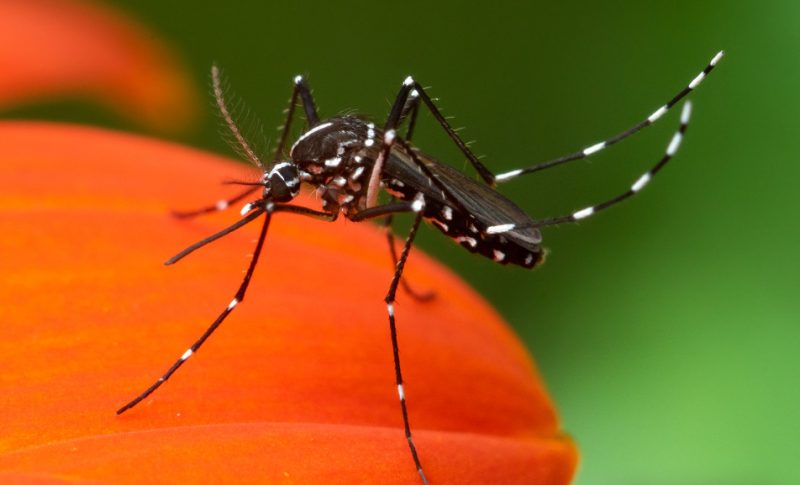
Mosquitoes are among the most familiar and widespread biting insects in Missouri, recognized by their slender bodies, long legs, and delicate wings. Adults typically measure 3 to 6 millimeters, with a needle-like proboscis used for feeding. While both males and females feed on nectar, only the females bite humans and animals to obtain blood for egg development.
These insects thrive in warm, humid environments and breed in standing water such as ponds, clogged gutters, puddles, and containers left outdoors. Their life cycle progresses quickly during Missouri’s summer months, leading to large populations. Mosquitoes become most active during dusk and dawn, making those times the highest risk for bites.
Some mosquito species in Missouri can transmit West Nile virus, a disease carried through their bite. Most infections cause mild flu-like symptoms, but severe cases may affect the nervous system and require medical care. Although the overall risk remains relatively low, any mosquito-borne illness demands caution, especially for older adults or individuals with weakened immune systems.
Reducing mosquito danger involves eliminating standing water, using insect repellent, and installing proper window screens. Outdoor fans, long sleeves, and avoiding peak mosquito hours can also help reduce bites. Mosquitoes may be tiny, but their ability to spread disease makes them one of the most concerning insects in Missouri.
Deer Tick (Blacklegged Tick)

The Deer Tick, also known as the Blacklegged Tick, is a small but medically significant species in Missouri. Adults measure only 2 to 3 millimeters, with females displaying a reddish-brown abdomen and a black shield near the head. Their small size allows them to go unnoticed, especially when hiding in hair or on clothing.
These ticks prefer shaded, humid environments such as forests, tall grass, and leaf litter. They climb onto vegetation and wait for animals or humans to brush past, using their outstretched legs to latch onto hosts. Deer Ticks are active throughout much of the year, especially during spring and fall when conditions are moist and cool.
The Deer Tick is known for transmitting Lyme disease, a bacterial infection that can cause fever, fatigue, joint pain, and the signature bull’s-eye rash. If left untreated, Lyme disease may lead to long-term complications affecting the heart or nervous system. Because these ticks often attach for long periods, early detection is crucial.
Wearing long pants, using tick repellent, and performing full-body checks after outdoor activities are the best ways to prevent bites. Keeping lawns trimmed and avoiding dense brush can also reduce tick presence. Despite their tiny size, Deer Ticks pose one of the greatest disease risks among Missouri’s insects.
Lone Star Tick
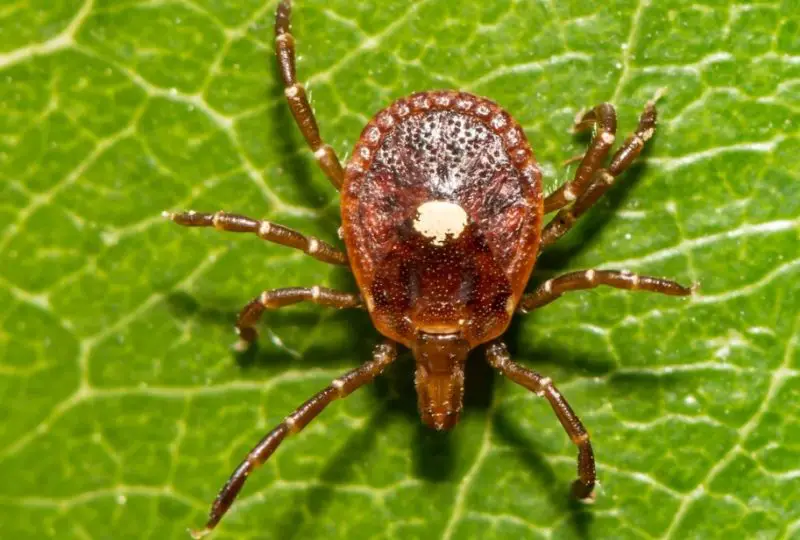
The Lone Star Tick is one of Missouri’s most common and aggressive tick species, easily identified by the distinctive white dot on the back of adult females. Males have scattered white markings instead of a single spot. Adults measure about 3 to 6 millimeters, but they swell dramatically after feeding.
These ticks inhabit wooded areas, grassy fields, and brushy edges where deer, rodents, and other mammals are abundant. Lone Star Ticks actively seek hosts by moving toward heat, vibrations, and carbon dioxide. Their active behavior increases the likelihood of attaching to humans, especially during late spring and summer.
Lone Star Ticks can transmit several illnesses, including ehrlichiosis and tularemia. In addition, some bites have been linked to the development of alpha-gal syndrome, a condition that causes an allergic reaction to red meat. Symptoms range from mild irritation at the bite site to more severe systemic reactions depending on the disease.
Preventing Lone Star Tick encounters requires similar precautions to those used for other ticks: using repellents, tucking pants into socks, wearing light-colored clothing, and checking for ticks after being outdoors. Because these ticks actively approach hosts, rather than waiting passively, they are considered one of Missouri’s most problematic tick species.
American Dog Tick
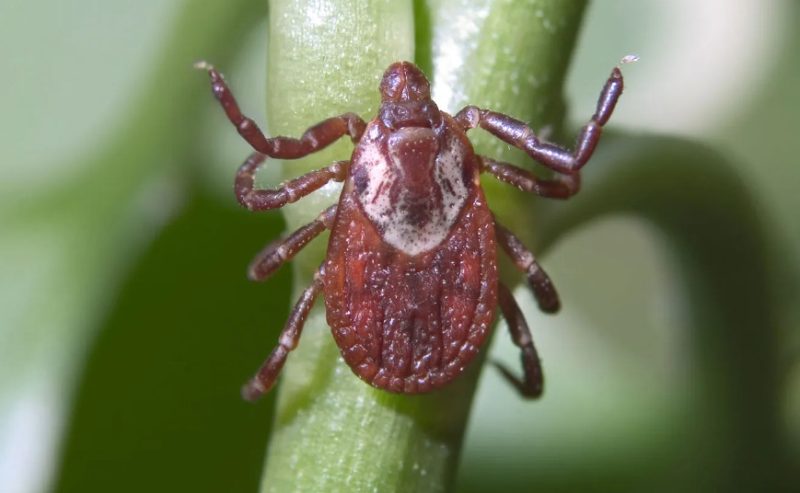
The American Dog Tick is a large, robust tick frequently found in Missouri. Adults measure around 5 millimeters before feeding and can swell to much larger sizes when engorged. They are recognized by their reddish-brown bodies and ornate, white-patterned shield near the head. Their size and coloration make them easier to identify than many smaller tick species.
These ticks favor open fields, grassy trails, and areas with abundant wildlife, especially dogs, raccoons, and rodents. They typically wait on tall vegetation until a host brushes by, grabbing on with their front legs. American Dog Ticks are most active in late spring and early summer, aligning with periods of increased outdoor activity.
This species is known for transmitting Rocky Mountain spotted fever, a potentially serious illness that begins with fever, headache, and rash. They can also spread tularemia, though less commonly. The bite itself may cause mild irritation, but the real danger comes from pathogen transmission if the tick remains attached for several hours.
Keeping pets treated with veterinarian-approved tick preventatives and checking them after outdoor walks can greatly reduce tick exposure. Wearing long clothing and avoiding tall grass also helps. Although the American Dog Tick is larger than many other species, it is equally capable of transmitting harmful diseases to humans.
Kissing Bug (Triatomine Bug)

The Kissing Bug, or Triatomine Bug, is a cone-nosed insect found in parts of Missouri, known for its dark body, orange or red edging, and elongated head. Adults typically measure 20 to 28 millimeters and are often mistaken for harmless beetles. Their flattened shape allows them to hide in cracks, woodpiles, and animal nests.
These bugs feed on the blood of mammals, including humans, typically at night. They earned their nickname because they often bite near the mouth or face while a person sleeps. Although the bite itself is usually painless, some individuals experience itching, swelling, or allergic reactions afterward.
The primary concern with Kissing Bugs is their ability to transmit Chagas disease, a parasitic illness more common in Central and South America. While disease transmission in Missouri is rare, the potential risk still exists if the insect’s feces enter the bite wound. Early symptoms can resemble the flu, but chronic infections may cause long-term heart or digestive problems.
Reducing the presence of Kissing Bugs involves sealing home entry points, keeping outdoor lights to a minimum, and ensuring pets’ sleeping areas are clean. Avoiding contact with the insects and removing them safely is key. Though not common carriers of disease in Missouri, their biting habits and potential risks make them a species worth noting.
Assassin Bug varieties
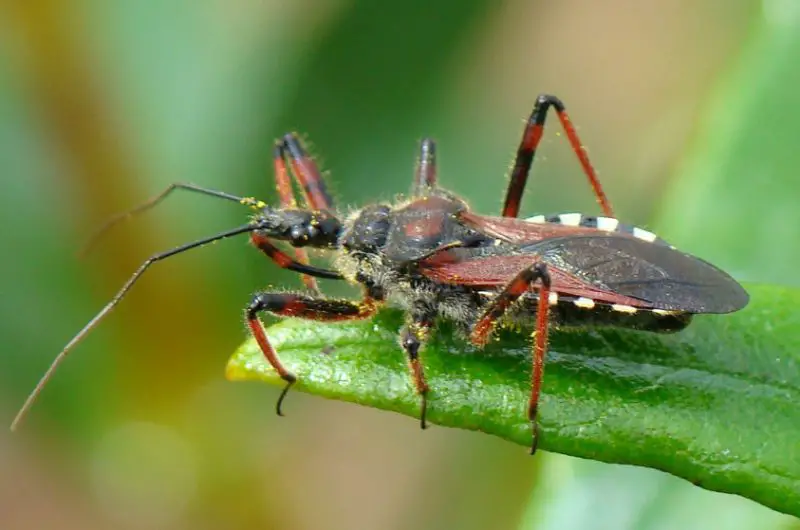
Assassin Bugs are a diverse group of predatory insects found across Missouri, known for their elongated bodies, narrow heads, and strong, curved mouthparts called a rostrum. Adults vary widely in size depending on the species, typically ranging from 10 to 25 millimeters. Their colors can include brown, black, gray, or mottled patterns that help them blend into vegetation or soil.
These insects thrive in woodlands, gardens, tall grasses, and areas rich in other insects, which serve as their primary prey. Assassin Bugs move slowly and deliberately until they strike, using their sharp rostrum to pierce and immobilize victims. While they benefit the environment by controlling pests, their hunting method makes them easy to encounter in outdoor spaces.
An Assassin Bug bite is not venomous in the traditional sense, but it is extremely painful due to the insect’s piercing mouthparts. The bite may cause swelling, burning, or localized irritation that lasts several hours. Some species, particularly those resembling Kissing Bugs, may trigger allergic reactions in sensitive individuals.
Despite their defensive bite, Assassin Bugs rarely attack unless handled or provoked. They play an important ecological role and generally avoid human contact. Recognizing their distinctive shape and avoiding direct handling is the best way to prevent a painful encounter while still appreciating their value in Missouri’s ecosystems.
Southern House Spider

The Southern House Spider is a common species in Missouri homes, recognized by its dark brown to nearly black coloration and thin, elongated legs. Females tend to be larger and heavier-bodied, often measuring up to 20 millimeters, while males are slimmer and more frequently spotted wandering indoors. Their slightly fuzzy appearance and long legs often lead people to mistake them for Brown Recluses.
These spiders prefer dark, quiet corners such as attics, garages, crawlspaces, and outdoor structures. They create messy, funnel-like webs in crevices where they wait for insects to stumble inside. Males roam actively in search of mates, which often brings them into bathrooms, hallways, and living rooms.
Although often feared because of their size and speed, Southern House Spiders are not considered medically dangerous. Their bites are rare and typically result in mild redness or swelling. They lack the necrotic venom associated with Brown Recluses, making them far less of a threat than their appearance might suggest.
Their ability to reduce household insect populations makes them beneficial guests, though many people prefer not to have them indoors. Regular cleaning, sealing gaps, and removing old webs can help reduce encounters. Understanding their harmless nature can ease concerns and help distinguish them from more dangerous spiders.
Giant Water Bug
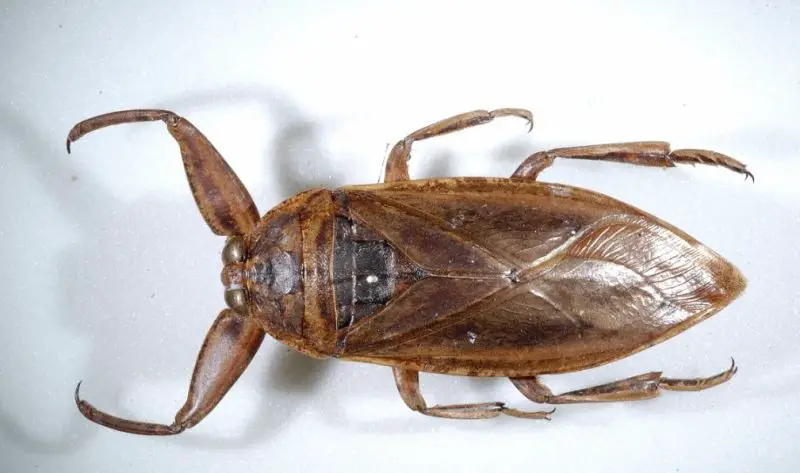
The Giant Water Bug is one of the largest true bugs found in Missouri, often reaching lengths of 20 to 65 millimeters. It has a broad, flat, oval-shaped body with powerful front legs adapted for grasping prey. Its brown coloration helps it blend into muddy ponds and marshy environments where it spends most of its life underwater.
These bugs inhabit slow-moving or still freshwater bodies such as ponds, lakes, and marshes. They are strong swimmers and skilled predators, feeding on fish, amphibians, and other aquatic insects. During mating season, they may fly toward lights at night, surprising people with their large, imposing appearance.
Giant Water Bugs can deliver a painful bite with their piercing mouthparts. Though the venom is not dangerous to humans, the bite is known to cause intense, sharp pain that can last for several hours. Because they prefer aquatic prey, bites usually occur only when the insect is handled or stepped on accidentally.
Despite their intimidating size, Giant Water Bugs play an important role in freshwater ecosystems. They help regulate populations of small aquatic animals and serve as food for fish and birds. Avoiding direct contact and being cautious around water edges at night can prevent unwanted encounters.
Wheel Bug
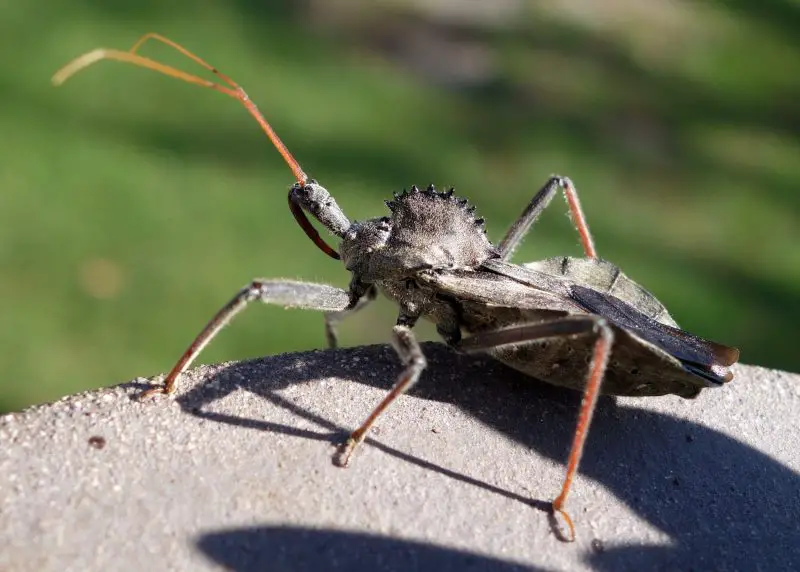
The Wheel Bug is a unique and impressive insect found throughout Missouri, instantly recognizable by the large, spiny, gear-like wheel on its thorax. Adults can reach up to 40 millimeters in length, making them one of the biggest Assassin Bug species in North America. Their gray, rough body gives them a prehistoric appearance that draws attention.
These insects inhabit gardens, forests, fields, and residential yards where they hunt caterpillars, beetles, and other insects. They move slowly but strike quickly with their strong rostrum, injecting enzymes that immobilize and liquefy their prey. Their presence is often welcomed by gardeners due to their appetite for pests.
However, the Wheel Bug’s bite is notoriously painful and is considered one of the most severe among non-venomous insects in Missouri. A bite may cause immediate burning, swelling, and prolonged tenderness that can take days or weeks to fully resolve. They do not bite unless provoked, but handling them is strongly discouraged.
Even with their painful defense, Wheel Bugs are beneficial predators and valuable members of Missouri’s ecosystems. Observing their fascinating behavior from a safe distance is the best way to appreciate them. Their distinctive wheel-shaped crest makes them easy to identify and avoid when necessary.
Fire Ant (localized areas)
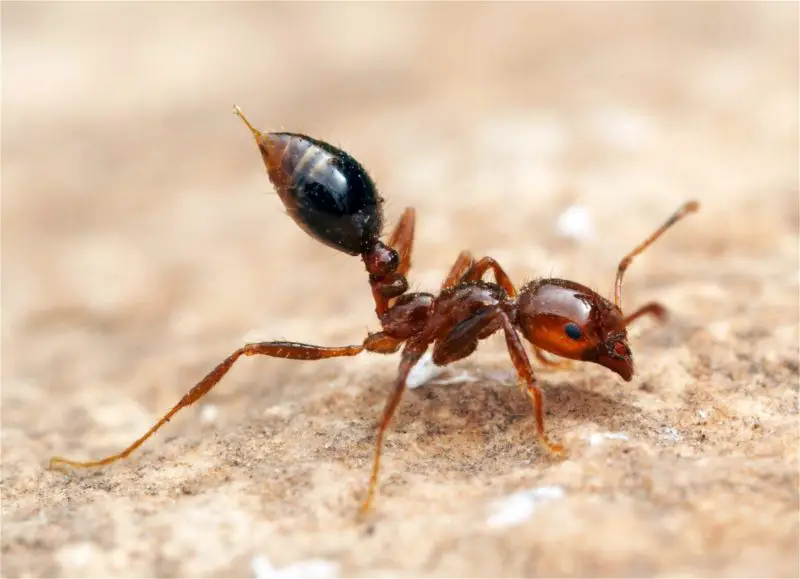
Fire Ants are an increasingly concerning presence in some localized parts of Missouri, though not yet widespread across the state. These ants are reddish-brown, measuring 2 to 6 millimeters, and form large colonies with distinctive dome-shaped mounds. Their fast, aggressive movements and uniform color set them apart from many native ant species.
These ants prefer sunny, open areas such as lawns, fields, pastures, and roadside edges. Colonies grow rapidly and fiercely defend their mounds from disturbances. When threatened, Fire Ants swarm aggressively, climbing onto skin and delivering coordinated stings in quick succession.
A Fire Ant sting is sharp and painful, often producing a burning sensation followed by itchy, white pustules. For some individuals, multiple stings can trigger serious allergic reactions requiring immediate medical attention. Fire Ants are particularly dangerous because they attack in groups, not individually.
Controlling Fire Ant populations requires targeted treatment and careful monitoring, especially in areas where children or pets play. Avoiding contact with mounds and wearing protective footwear in infested areas can reduce the risk of stings. Though their distribution in Missouri is limited, their aggressive behavior makes them a species worth watching closely.
Blister Beetle
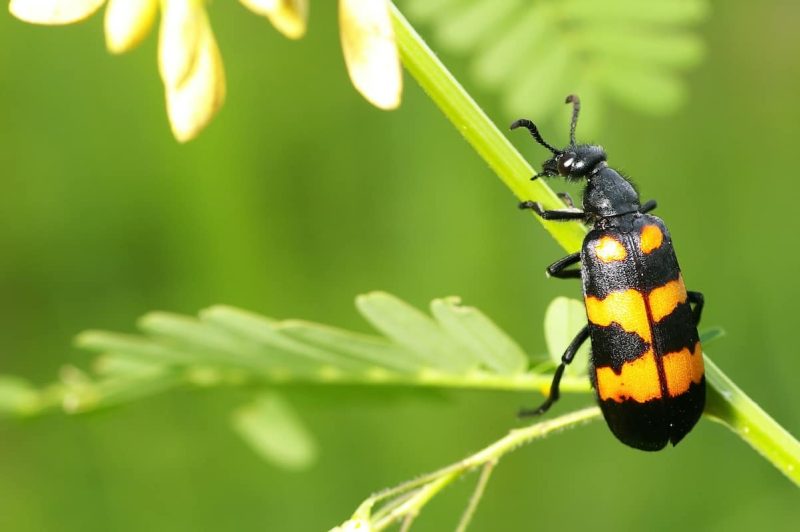
Blister Beetles are slender, soft-bodied insects found throughout Missouri, easily recognized by their elongated bodies, narrow necks, and flexible wing covers. Adults typically measure 10 to 25 millimeters, with colors that range from black and gray to striped or brightly patterned. Their delicate appearance can be misleading, as they contain a potent defensive chemical called cantharidin.
These beetles inhabit fields, gardens, meadows, and areas with abundant flowering plants. They feed on nectar, pollen, and sometimes foliage, often gathering in large groups during late summer. While they play a role in pollination, their presence on crops—especially alfalfa—can be problematic due to their toxic properties.
When crushed or handled, Blister Beetles release cantharidin, a compound that causes painful skin irritation and fluid-filled blisters. Even brief contact can lead to noticeable burns, and ingestion of the toxin can be harmful to livestock. People typically experience damage only through direct physical contact, making it important to avoid touching them with bare hands.
Although they pose risks, Blister Beetles are generally non-aggressive and will not bite or sting. Their primary danger comes from accidental squashing or careless handling. Recognizing their slender shape and keeping a safe distance is the best way to prevent contact with their highly irritating defensive chemicals.
Velvet Ant (Cow Killer Ant)
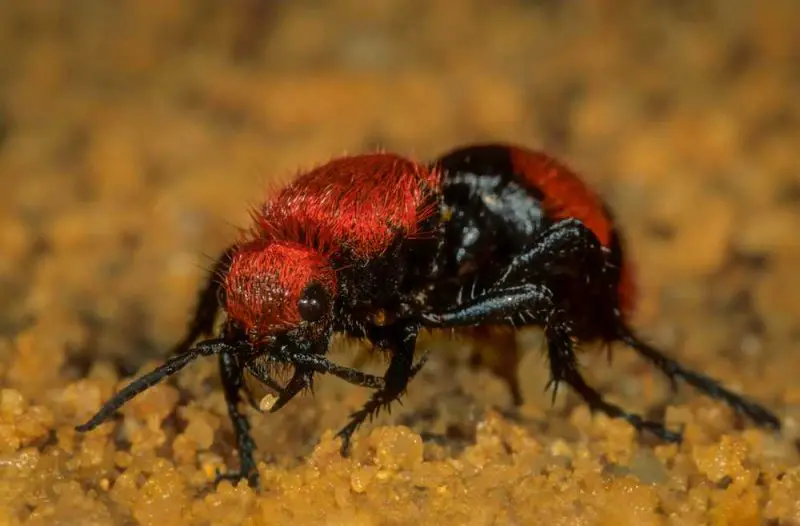
The Velvet Ant, often called the Cow Killer Ant, is actually a species of wingless female wasp known for its bright red-and-black coloration and extremely tough exoskeleton. Adults usually measure 12 to 25 millimeters and have a velvety appearance that attracts attention. Their striking colors serve as a warning to predators and humans alike.
These insects inhabit dry, sandy areas, open fields, and woodland edges across Missouri. Females wander actively on the ground searching for the nests of other wasps or bees, where they lay their eggs. Males, which have wings, are less commonly noticed and pose less danger because they cannot sting.
The Velvet Ant is famous for its powerful sting, often described as intensely painful and long-lasting. While not typically dangerous to healthy adults, the sting can cause swelling, burning, and significant discomfort. Their sting is strictly defensive, delivered only when handled or stepped on, but the effect can be memorable.
Despite their fearsome reputation, Velvet Ants are solitary and avoid confrontation whenever possible. Giving them space and avoiding direct handling is the best way to prevent stings. Their bold appearance makes them easy to identify, allowing people to appreciate their uniqueness without risking a painful encounter.
Centipedes (House Centipede & Giant Redheaded Centipede)
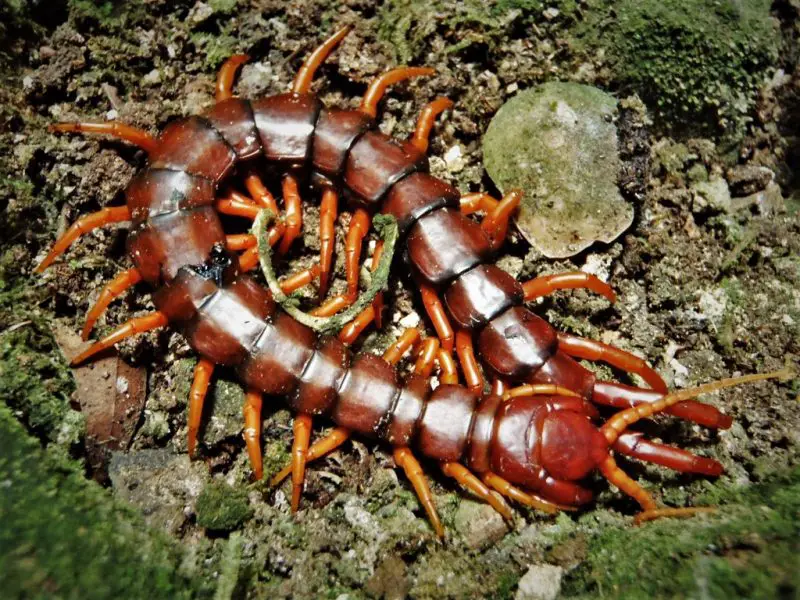
Centipedes in Missouri include several varieties, with the House Centipede and the Giant Redheaded Centipede being the most notable. House Centipedes are long, slender arthropods measuring 25 to 40 millimeters, with numerous delicate legs that allow them to move quickly across floors and walls. In contrast, the Giant Redheaded Centipede can reach 150 millimeters, featuring a striking red head and dark, banded body.
House Centipedes commonly inhabit basements, bathrooms, and crawlspaces where humidity is high and prey is abundant. They feed on insects such as cockroaches, silverfish, and spiders, making them beneficial house hunters. The Giant Redheaded Centipede prefers outdoor environments such as forests, leaf litter, and rotting logs, where it preys on insects, small lizards, and even tiny rodents.
Both species are capable of biting with their venomous forcipules, though House Centipede bites are rare and typically cause mild pain or localized swelling. The Giant Redheaded Centipede, however, can deliver a much more painful bite, with symptoms that may include burning, redness, and lingering tenderness. Although not life-threatening to most people, its venom can be alarming due to the intensity of the pain.
Centipedes are generally shy and avoid human contact, preferring to retreat quickly when disturbed. Keeping indoor areas dry, sealing gaps, and reducing clutter can help limit House Centipede activity. Outdoors, watching where you place your hands and feet can prevent unwanted encounters with larger species. While unnerving in appearance, centipedes play an important role in controlling other pests.
FAQs About Dangerous Bugs in Missouri
Are dangerous bugs common in Missouri?
Yes, many dangerous bugs are common across Missouri, especially during the warmer months. Species like ticks, mosquitoes, wasps, and spiders can be found in forests, fields, backyards, and even homes. While most avoid human contact, accidental encounters happen frequently due to the state’s diverse wildlife habitats.
Which bug in Missouri is considered the most dangerous?
Different species pose different risks, but Black Widow Spiders, Brown Recluse Spiders, and ticks are among the most dangerous due to their venom or disease-carrying abilities. Ticks, in particular, are responsible for transmitting illnesses such as Lyme disease, ehrlichiosis, and Rocky Mountain spotted fever.
How can I identify a dangerous spider in Missouri?
Dangerous spiders often have distinct markings. Brown Recluses have a violin-shaped mark on the cephalothorax, while Black Widows display a red hourglass on the underside of the abdomen. Observing coloration, size, and body shape can help with identification, but avoiding handling any unknown spider is safest.
Do wasps and hornets in Missouri attack unprovoked?
Most wasps and hornets only become aggressive when they feel threatened or when their nest is disturbed. However, species like Yellow Jackets and Bald-Faced Hornets are known to defend their colonies fiercely. Staying aware of nest locations reduces the chance of provoking an attack.
Are tick bites always dangerous?
Not every tick bite leads to illness, but certain species carry pathogens that can cause serious diseases. The Deer Tick, Lone Star Tick, and American Dog Tick are responsible for most tick-borne illnesses in Missouri. Prompt removal and careful monitoring help reduce risks.
Can dangerous bugs enter homes easily?
Yes, many species can slip indoors through gaps, vents, open windows, or carried on pets. House Centipedes, Southern House Spiders, and Yellow Sac Spiders are among the most common indoor intruders. Sealing entry points and maintaining cleanliness helps keep these pests out.
What is the best way to prevent mosquito bites?
Using EPA-approved repellents, installing window screens, eliminating standing water, and avoiding outdoor activities during dusk and dawn are effective strategies. Mosquitoes thrive in humid environments, so reducing water sources significantly limits their breeding sites.
Are Giant Water Bugs dangerous?
Giant Water Bugs are not venomous in the medical sense, but their bite is extremely painful. They typically avoid humans and spend most of their time underwater. Bites usually happen when they are handled or stepped on along pond edges.
How should I treat a sting or bite from a dangerous bug?
Most mild bites and stings can be treated with cleaning, cold compresses, and over-the-counter pain relief. However, symptoms like difficulty breathing, widespread swelling, fever, or rapidly worsening pain require immediate medical attention. Allergic individuals should seek help quickly.
Are dangerous bugs active in winter in Missouri?
Many bugs become inactive in winter, but some species—like ticks, house spiders, and centipedes—can remain active indoors or during mild temperatures. Staying cautious year-round is important, especially in wooded or shaded areas.
Conclusion
Missouri’s diverse landscapes support an equally diverse population of insects and arachnids, many of which play essential roles in maintaining ecological balance. Yet among these beneficial creatures are species capable of delivering painful stings, venomous bites, and disease-carrying threats. Understanding how to identify these bugs, where they live, and how they behave is one of the most effective ways to avoid harmful encounters.
Whether you spend time hiking, gardening, fishing, or simply enjoying your backyard, awareness is key. Each species in this guide poses its own risks, but with proper knowledge and caution, most dangers can be minimized. Staying informed, taking preventive measures, and respecting wildlife help ensure that outdoor activities in Missouri remain both enjoyable and safe.





